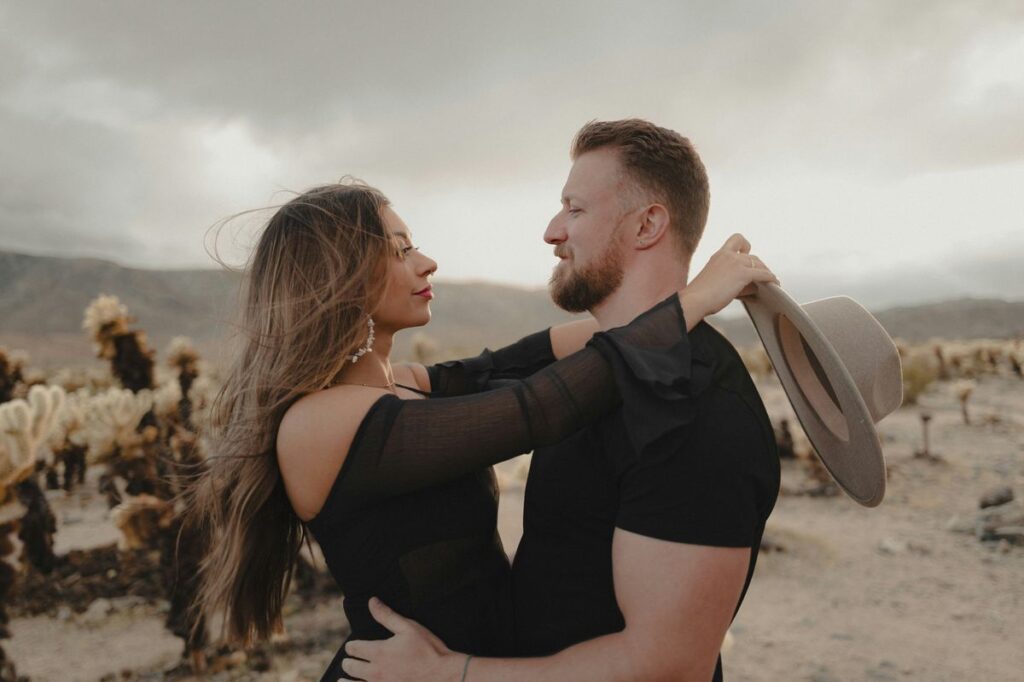The Alphabetical Glossary on Alternative Relationships offers a comprehensive guide through the diverse landscape of sexual orientations, gender identities, and relationship structures. Drawing inspiration from the UC Davis LGBTQIA Resource Centre’s glossary, this article delves into the intricacies of identity and orientation, expressions of gender and sexuality, and the challenges and solidarity found within alternative relationships. It also explores cultural and indigenous perspectives, providing a rich tapestry of understanding for these complex topics. As language and self-identification within LGBTIQA+ communities are ever-evolving, this glossary serves as a starting point for education and awareness.
Key Takeaways
- The glossary is a dynamic and educational tool reflecting the evolving language of LGBTIQA+ communities, based on the UC Davis LGBTQIA Resource Centre’s work.
- It covers a wide range of topics, from identity and orientation to expressions of gender and sexuality, as well as the unique challenges within alternative relationships.
- Cultural and indigenous perspectives are highlighted, showcasing the global diversity of gender and sexual identities such as Two-Spirit, Fa’afafine, and Takatāpui.
- The glossary emphasizes the importance of understanding and respecting the various relationship structures, including polyamory and non-monogamous arrangements.
- Allyship and combating microaggressions are crucial aspects of supporting diverse sexual and gender identities, fostering a more inclusive society.
Understanding Identity and Orientation

Allosexual vs. Asexual: Contrasting Sexual Attractions
In the exploration of sexual identities, the distinction between allosexual and asexual individuals is pivotal. Allosexual people experience sexual attraction to others, which can be directed towards any gender, including but not limited to heterosexual attractions. In contrast, asexual individuals may not experience sexual attraction at all, or may only do so under specific circumstances.
The concept of sexual attraction is not binary but exists on a spectrum, where individuals may identify anywhere from allosexual to asexual, with various nuances in between.
It is important to recognize that the absence of sexual attraction in asexual people does not equate to an absence of romantic attraction. Many asexual people engage in romantic relationships that are consensual and fulfilling. Similarly, allosexual individuals may consensually engage in relationships that are not defined by sexual attraction alone.
- Allosexual: Typically experiences sexual attraction.
- Asexual: May experience little to no sexual attraction.
- Demisexual: May experience sexual attraction after forming a strong emotional connection.
Understanding these identities is crucial for fostering inclusive environments where all forms of attraction and relationships are respected.
The Spectrum of Romantic Attraction: Aromantic and Beyond
The landscape of romantic attraction is diverse, encompassing a wide range of experiences and identities. Aromantic individuals often do not experience attraction to another person in a romantic way, but this does not preclude them from forming deep emotional connections. It’s important to recognize that romantic relationship dynamics can vary greatly, and not everyone seeks the same level of romantic or sexual involvement.
For some, autonomy in how they express affection is paramount, and they may prefer relationships that are less traditionally defined. A term that has emerged within the community is ‘comet’, describing a relationship that passes through one’s life with intensity but does not remain a constant presence.
- Romantic attraction is not a prerequisite for a meaningful relationship.
- Emotional connection can exist in many forms, and it’s not always romantically inclined.
- Autonomy in relationships allows for a personalized approach to intimacy.
The spectrum of romantic attraction is broad and can include various identities and experiences beyond the traditional romantic or sexual framework.
Bisexuality and Fluid Sexual Orientations
Sexual orientation is not a fixed point on a linear scale but rather a spectrum where individuals can find themselves anywhere from exclusively attracted to one gender to being attracted to all genders. Bisexual individuals are attracted to both their own and other genders, encompassing a wide range of potential attractions. Pansexual people, on the other hand, experience romantic, sexual, or emotional desire for people of all genders and sexes, often regardless of gender identity.
- Bisexual: Attraction to same-sex and opposite-sex individuals.
- Pansexual: Attraction to individuals regardless of gender.
Fluid sexual orientations recognize that attractions can change over time, and labels such as bisexual and pansexual allow for this variability. It’s important to understand that these orientations are valid and significant aspects of one’s identity.
The understanding of sexual orientation has evolved to embrace a more inclusive spectrum, acknowledging that identities like bisexual and pansexual are not just about the physical aspect of attraction but also the emotional and romantic connections that form between individuals.
Navigating Gender: Bigender and Binary Identities
Exploring the landscape of gender identities reveals a rich tapestry of self-expression and identification. Bigender individuals embody aspects of both masculine and feminine roles, navigating a path that may shift between or combine these cultural characteristics. Binary gender, on the other hand, adheres to the traditional classification into masculine and feminine forms.
The journey of self-discovery in gender identity is deeply personal and varies greatly among individuals. It is a process that often involves reconciling internal understandings of self with external perceptions and societal expectations.
Understanding these identities is crucial, as they play a significant role in how people interact with the world and form relationships. It’s essential to recognize and respect the diverse ways in which individuals experience and express their gender, whether they align with binary norms or exist outside of them.
Expressions of Gender and Sexuality

The Intersection of BDSM and Alternative Relationships
In the realm of alternative relationships, BDSM stands as a significant umbrella term encompassing a variety of practices involving power dynamics, bondage, and consensual role-playing. The glossary of terms within this domain is extensive, with each term used to describe specific dynamics and preferences. For instance, ‘kink’ is a term often associated with BDSM, referring to unconventional sexual practices that individuals or couples may explore to fulfill a fantasy or enhance intimacy with a sexual partner.
- Bondage and Discipline: Restricting movement and using various forms of discipline.
- Dominance and Submission: Power exchange roles that are consensual and negotiated.
- Sadism and Masochism: Finding pleasure in giving or receiving pain.
Outside of BDSM, alternative relationships may also include arrangements like ‘friends with benefits’, where the connection is primarily sexual without the expectation of romantic commitment. This term often reflects a more casual approach to sexual partnerships, differing from the structured dynamics found in BDSM.
Bear Community: Embracing Body Diversity
The Bear Community represents a vibrant facet of the LGBTQIA+ spectrum, where individuals often defy conventional standards of attractiveness. Consent is a cornerstone in the Bear Community, just as it is in all aspects of LGBTQIA+ interactions, ensuring that personal boundaries are respected and celebrated.
The community is diverse, encompassing a range of identities such as Cubs, Otters, Chubs, Wolves, and Lions, each with their own unique characteristics:
- Cubs are typically younger or less hairy.
- Otters are slim and may be moderately hairy.
- Chubs are individuals with a heavier body mass, with no specific hair requirement.
- Wolves are intense and typically hairy, with a leaner build than Bears.
- Lions represent confidence and typically have a significant amount of hair.
Embracing body diversity within the community challenges societal norms and promotes a culture of acceptance and self-love.
The Bear Community not only provides a space for self-expression but also fosters a sense of belonging and solidarity among its members. The emphasis on inclusivity and the celebration of diversity are what make this community a beacon for those seeking an alternative relationship space where they can truly be themselves.
Drag Culture: Kings, Queens, and Performance Identities
Drag culture is a vibrant form of expression that challenges traditional norms of gender and performance. Drag kings and queens showcase the fluidity of gender, often using their art to comment on and critique societal expectations. Performers who engage in drag may not necessarily identify as transgender, but all share a common thread of exploring and playing with gender norms.
- Drag Kings: Often women, but not exclusively, performing in masculine attire.
- Drag Queens: Often men, but not exclusively, performing in feminine attire.
The art of drag is not just about the costumes and makeup; it’s a powerful statement against the pressure to conform to binary gender roles. It’s a space where gender is not imposed, but rather chosen and celebrated in all its forms. The community itself is diverse, with performers coming from all walks of life, each bringing their own unique perspective to what drag can be.
The two most common types of drag performers are drag queens and drag kings. In understanding the range of possibilities for what can be drag, it is important to recognize the individuality and creativity each performer brings to the stage.
Challenges and Solidarity in Relationships

Allyship: Supporting Diverse Sexual and Gender Identities
Allyship involves the commitment to understanding and supporting individuals across the spectrum of sexual and gender identities. An anchor partner can be a pivotal source of emotional support for those exploring or solidifying their identities within alternative relationship structures. This support is not just about advocacy but also about the personal commitment to the growth and well-being of one’s partner.
- Understanding the importance of emotional support in the context of diverse identities.
- Recognizing the role of an anchor partner in providing stability and support.
- Committing to continuous education on issues affecting the LGBTQIA+ community.
- Actively working to create inclusive and safe spaces for all identities.
Allyship is not a static achievement but a dynamic process of learning, understanding, and acting in solidarity with marginalized communities.
Microaggressions and Their Impact on Relationships
Microaggressions are brief and subtle behaviors that, whether intentional or not, communicate hostile, derogatory, or negative messages to individuals based on their oppressed identities. These actions, often dismissed as minor or insignificant, can have a profound impact on the intimacy and trust within a relationship. When partners live together, the frequency and intensity of microaggressions can escalate, as close quarters provide more opportunities for these harmful interactions.
The invalidation of a person’s identity through microaggressions is a significant barrier to achieving genuine connection and understanding in a relationship.
Understanding and addressing microaggressions is crucial for fostering a supportive and nurturing environment. Here are some steps to mitigate their impact:
- Acknowledge the existence and harmful effects of microaggressions.
- Educate oneself and others about the diverse experiences of marginalized groups.
- Practice active listening and validate the feelings of those affected.
- Commit to ongoing personal growth and open communication to prevent future microaggressions.
Understanding and Combating Cissexism
Cissexism is a system of discrimination that invalidates transgender identities, perpetuating the idea that being cisgender is the default or more legitimate experience. This form of exclusion is deeply rooted in societal norms and often intersects with other forms of oppression, such as racism, sexism, and ableism.
To combat cissexism, it is crucial to recognize and challenge these harmful assumptions. Education and awareness are key steps in addressing the biases that underpin cissexism. Below is a list of actions that can help foster a more inclusive environment:
- Acknowledge the diversity of gender identities beyond the binary.
- Use inclusive language that respects individuals’ pronouns and gender expressions.
- Support policies and practices that affirm the rights of transgender and non-binary people.
- Engage in ongoing learning about gender diversity and the experiences of transgender individuals.
Cissexism not only affects individuals but also shapes the dynamics within communities. It is essential to understand the impact of cissexism on relationships and to actively work towards creating spaces where all gender identities are respected and celebrated.
Cultural and Indigenous Perspectives

Two-Spirit: Indigenous Understandings of Gender and Sexuality
The concept of Two-Spirit is deeply rooted in the traditions of many Indigenous communities across North America. Two-Spirit individuals historically held—and often still hold—significant roles within their communities, such as spiritual leaders, healers, and keepers of important cultural knowledge. The term ‘Two-Spirit’ is not simply a reference to gender identity or sexuality, but encompasses a wide range of social, spiritual, and cultural responsibilities.
Two-Spirit people embody the fusion of masculine and feminine traits, creating a distinct social role that is recognized and respected within Indigenous cultures.
While the term ‘Two-Spirit’ was popularized in the 1990s, the presence of individuals who embody both masculine and feminine qualities has been acknowledged for centuries in Indigenous cultures. It is important to note that the understanding and expression of Two-Spirit identities are specific to each Indigenous culture and can vary greatly.
- Cultural Roles: Healers, leaders, mediators
- Spiritual Significance: Carriers of traditional knowledge, ceremonial participants
- Social Impact: Advocates for gender diversity, educators on the fluidity of gender and sexuality
The recognition of Two-Spirit people is a testament to the rich diversity and inclusivity found within Indigenous cultures, which often contrasts with the binary gender norms prevalent in many other societies.
Fa’afafine: The Samoan Gender Identity
In the rich tapestry of Samoan culture, Fa’afafine represent a revered third gender, blurring the lines between male and female. Assigned male at birth, Fa’afafine are recognized for their unique blend of masculine and feminine traits, which they express in a manner distinct to Polynesian society. This identity is deeply integrated into the social fabric, with Fa’afafine often taking on pivotal roles within their families and communities.
Fa’afafine challenge the Western binary gender norms, offering a glimpse into the fluidity and diversity of gender across different cultures.
While Fa’afafine are specific to Samoa, similar identities can be found throughout the world, each with its own cultural nuances. It is important to respect and understand these identities within their cultural context, as they are not only about gender expression but also about fulfilling social and familial roles.
The recognition and acceptance of Fa’afafine and other non-binary identities can serve as a model for inclusivity, demonstrating the importance of honoring individual experiences of gender and sexuality.
Takatāpui: Embracing Māori Sexual and Gender Diversity
Takatāpui, a term deeply rooted in Māori culture, signifies a devoted partner of the same sex. It has evolved to represent not just a sexual orientation but also a cultural identity, intertwining the two in a unique expression of self. This term has been reclaimed and broadened to foster unity within the LGBTIQA+ Māori community, serving as an umbrella term that celebrates both sexual and cultural diversity.
- Cultural Significance: Takatāpui is more than a label; it’s a bridge between sexuality and Māori heritage.
- Community Solidarity: The term strengthens community bonds and provides a sense of belonging.
- Identity Reclamation: Reclaiming takatāpui empowers individuals to define their identity on their own terms.
Embracing takatāpui is about acknowledging the past while forging a future where cultural and sexual identities are respected and celebrated.
Navigating Relationship Structures

Polyamory: Exploring Non-Monogamous Relationships
Polyamory is a form of polyamory where individuals engage in multiple relationships with the knowledge and consent of everyone involved. It is distinct from an open relationship, which may involve sexual encounters outside of a primary relationship without the expectation of love or deep emotional bonds. Polyamorous relationships can take many shapes, from triads, where three people are equally involved with each other, to hierarchical polyamory, where a primary partner takes precedence over others.
In polyamory, communication and consent are paramount. Partners may have different needs and boundaries, and these must be respected to maintain a healthy polyamorous relationship. Relationship anarchy, another form of polyamory, rejects traditional hierarchies and rules in favor of individual freedom and negotiation on a case-by-case basis.
- Kitchen table polyamory involves a close-knit network where all members are comfortable and familiar with each other, often sitting down at the ‘kitchen table’ for discussions.
- Parallel polyamory is a more separate approach where individuals have multiple relationships that operate independently of one another.
Polyamory challenges the conventional notion that one partner can or should fulfill all of one’s romantic and sexual needs. It embraces the idea that love is not finite and that individuals can love multiple people simultaneously.
In any polyamorous arrangement, whether it’s a new relationship or an established one, the dynamics can be complex. A nesting partner, for example, is someone with whom one lives and shares a domestic life, often considered a primary relationship. However, not all polyamorous relationships have a hierarchical structure. The flexibility of polyamory allows for a diverse range of relationship structures, all of which require ongoing communication and honesty.
Monogamy and Its Alternatives: A Comparative Look
In the realm of alternative relationships, the contrast between monogamy and non-monogamy is often at the forefront of discussion. Monogamy, the practice of having only one intimate partner at any one time, is widely recognized as the traditional relationship structure. However, various forms of non-monogamous relationships exist, each with its own set of dynamics and rules.
Consensual non-monogamy encompasses a range of relationship styles that are based on the knowledge and consent of all partners involved. This includes polyamory, which is the practice of engaging in multiple loving relationships simultaneously, and polygamy, which typically refers to having multiple spouses.
A common misconception is that jealousy is absent in non-monogamous relationships. However, it is a natural emotion that can arise in any relationship structure. The key difference is how jealousy is managed and communicated among partners. Some non-monogamous relationships are hierarchical, with primary and secondary partners, while others may be non-hierarchical or ‘monogamish’, a term used to describe a mostly monogamous relationship with some allowance for outside sexual activity.
- Monogamy: One intimate partner
- Polyamory: Multiple loving relationships
- Polygamy: Multiple spouses
- Monogamish: Mostly monogamous with allowances
Each relationship type has its own complexities and requires clear communication, boundaries, and understanding to thrive.
The Role of Pronouns in Expressing Identity in Relationships
In the realm of alternative relationships, people often use the term ‘pronouns’ to signify more than just a linguistic tool; they represent a person’s identity and how they wish to be recognized by others. The term is often used to encapsulate the respect and acknowledgment of an individual’s gender identity, which may not necessarily align with societal expectations or the sex assigned at birth.
Pronouns such as ‘she/her/hers’ and ‘he/him/his’ are commonly known, but gender-neutral options like ‘they/them/theirs’ and neopronouns such as ‘ze/hir/hirs’ are gaining traction. The term used to describe these new pronouns, ‘neopronouns’, can be employed by anyone but are particularly embraced by non-binary and gender non-conforming individuals.
Pronouns are a fundamental aspect of identity in relationships. Their correct use is a form of validation and respect, which is essential for fostering a supportive and understanding environment.
Here is a list of commonly used pronouns and their associated identities:
- She/Her/Hers: Typically used by individuals who identify as female.
- He/Him/His: Typically used by individuals who identify as male.
- They/Them/Theirs: Used by those who prefer gender-neutral language, often by non-binary individuals.
- Ze/Hir/Hirs: A neopronoun set that is also gender-neutral.
- Xe/Xem/Xyrs: Another set of neopronouns that some people might choose.
Open relationships come in different models: Primary/Secondary, Multiple Primary Partners, and Multiple Non-Primary Relationships. Boundaries are crucial for healthy relationships, emphasizing clear communication, respect, and consent.
Exploring the vast world of non-traditional relationships can be thrilling and enlightening. Whether you’re curious about swinging, polyamory, or any other form of open relationship, our website offers a treasure trove of resources to guide you. From educational articles to real-life stories, we provide the insights you need to navigate these dynamic relationship structures with confidence. Don’t wait to start your journey into a more fulfilling love life; visit our website now and join a community that celebrates diversity in love and connection.
Frequently Asked Questions
Q: What is an alternative relationship?
A: An alternative relationship refers to any relationship that does not follow traditional relationship expectations.
Q: What does the term “kink” mean in the context of alternative relationships?
A: In alternative relationships, “kink” refers to unconventional sexual practices or preferences.
Q: What is the difference between a polyamorous network and a triad relationship?
A: A polyamorous network involves multiple romantic relationships among a group of people, while a triad relationship specifically refers to a relationship between three individuals.
Q: What is a “hinge partner” in alternative relationships?
A: A hinge partner is someone who is involved with one or more members of a polyamorous network but is not romantically or sexually involved with every member.
Q: How is jealousy typically addressed in alternative relationships?
A: In alternative relationships, compersion is often considered the opposite of jealousy. Compersion is the state of mind where individuals feel joy when their partner experiences happiness with someone else.
Q: Who usually identifies with the term “pansexual” in the context of alternative relationships?
A: Pansexual is a term used by people who are attracted to others regardless of their gender identity or biological sex.
Q: What is a “comet” relationship in alternative relationships?
A: A comet is a term used to refer to relationships where individuals drift in and out of each other’s lives intermittently, much like a passing comet in the sky.
Discover Diversity – A Guide to the Spectrum of Love
Unlock the door to a world rich with diverse relationship dynamics through our comprehensive glossary. Join SwingTowns today by signing up for a free account, and immerse yourself in a community that celebrates all forms of love and connection. Embark on your journey of discovery and enlightenment—your adventure in alternative relationships starts here!
“So far it’s been a fun way to connect with like minded people. In a open, judgement free environment. Lots of people to get to know.” -StaggerinVixen86



